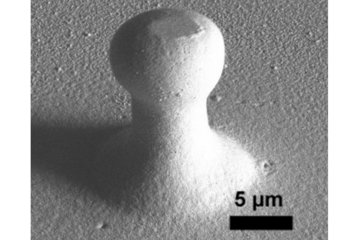
Tuning soft magnetic properties of nanostructured Fe-Co-Ti-X (X = Si, Ge, Sn) compositionally complex alloys through microstructure engineering
The aim of this project is to develop novel nanostructured Fe-Co-Ti-X (X = Si, Ge, Sn) compositionally complex alloys (CCAs) with adjustable magnetic properties by tailoring microstructure and phase constituents through compositional and process tuning. The key aspect of this work is to build a fundamental understanding of the correlation between microstructure and magnetic properties by length scale bridging characterization and property determination. The ultimate goal is to establish guidelines for designing alloys with high magnetization saturation (Ms) and low coercivity (Hc), to optimize the magnetic properties of CCAs for high frequency magnetic field applications.
Soft magnetic materials play a crucial role in determining the efficient operation of power electronics and electrical machines, such as motors and generators, etc. The introduction of wide bandgap (WBG) semiconductors allows power conversion electronics and motor controllers to operate at much higher frequencies (> 1 kHz). However, none of the commercial soft magnetic materials (for instance, silicon steels and soft ferrites, etc.) available today are able to unlock the full potential of WBG-based devices to further reduce energy losses due to their own drawbacks. Therefore, there is a demand to develop new soft magnetic materials to improve their efficient operation at high frequencies.
In this project, the microstructure of novel compositionally complex Fe-Co-Ti-X (X = Si, Ge, Sn) alloys will be tuned to tailor their magnetic properties by compositional variation and processing conditions (different manufacturing methods and thermal treatment). Microstructures will be characterized by techniques including X-ray diffraction (XRD), scanning electron microscopy (SEM) and transmission electron microscopy (TEM) related techniques. The bulk magnetic properties will be measured and correlated to imaging of magnetic domain structures by Lorentz microscopy and differential phase contrast – scanning TEM (DPC-STEM). This fundamental understanding of the microstructure - magnetism correlation in Fe-Co-Ti-X (X = Si, Ge, Sn) CCAs is the key to develop novel materials with tailorable performance for high frequency applications.













